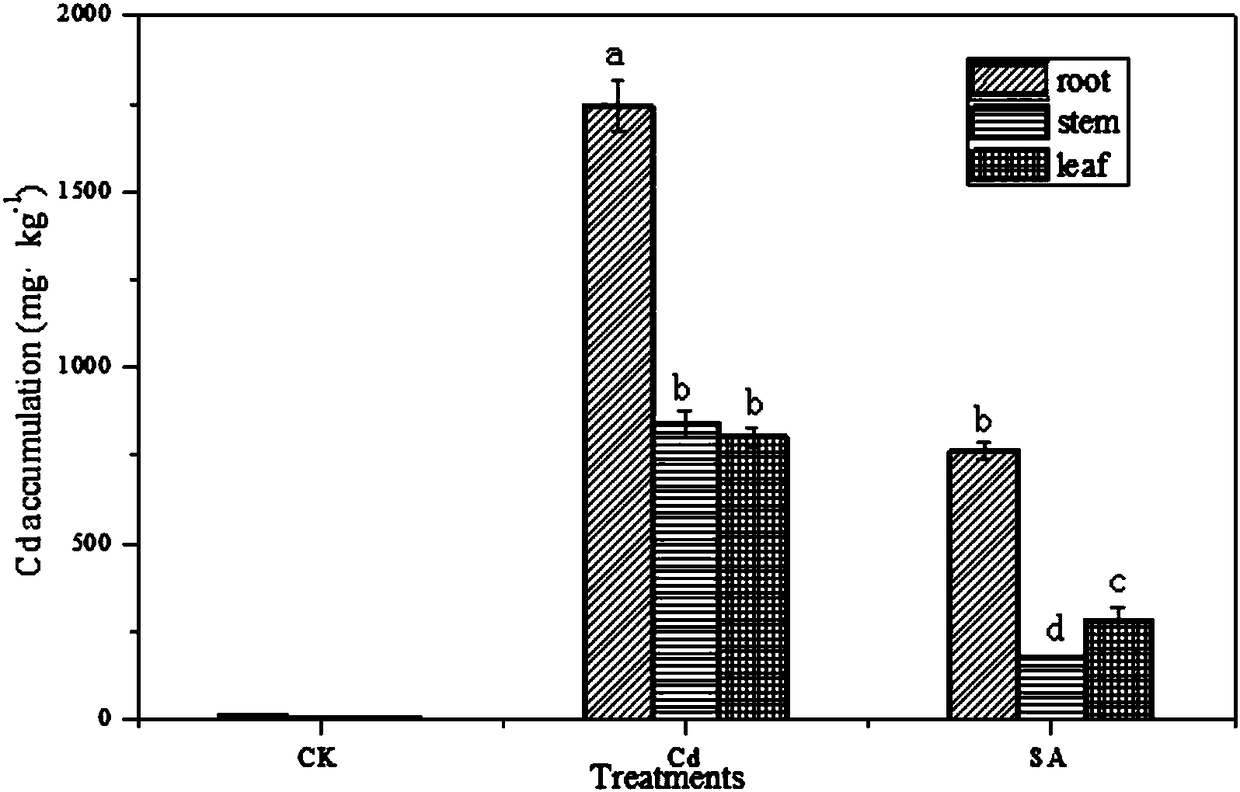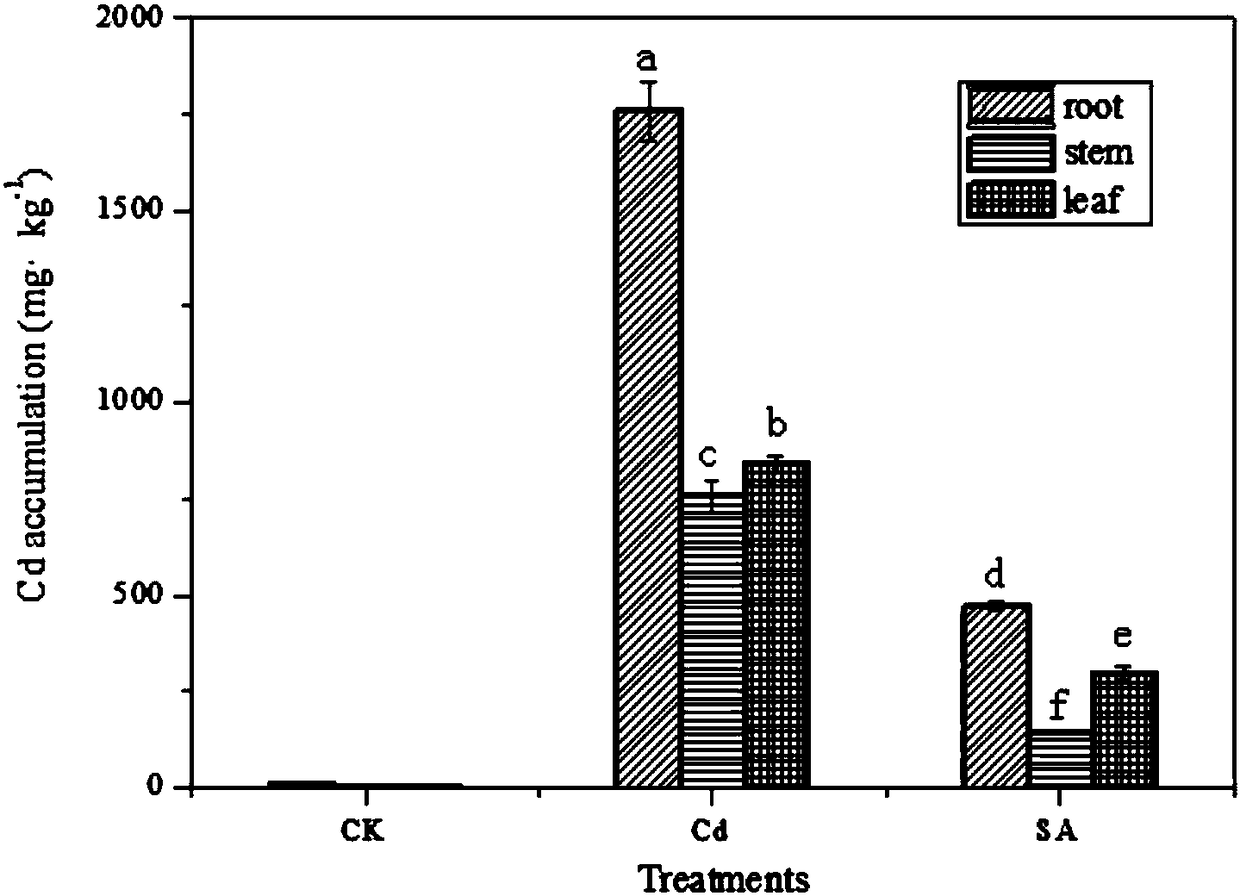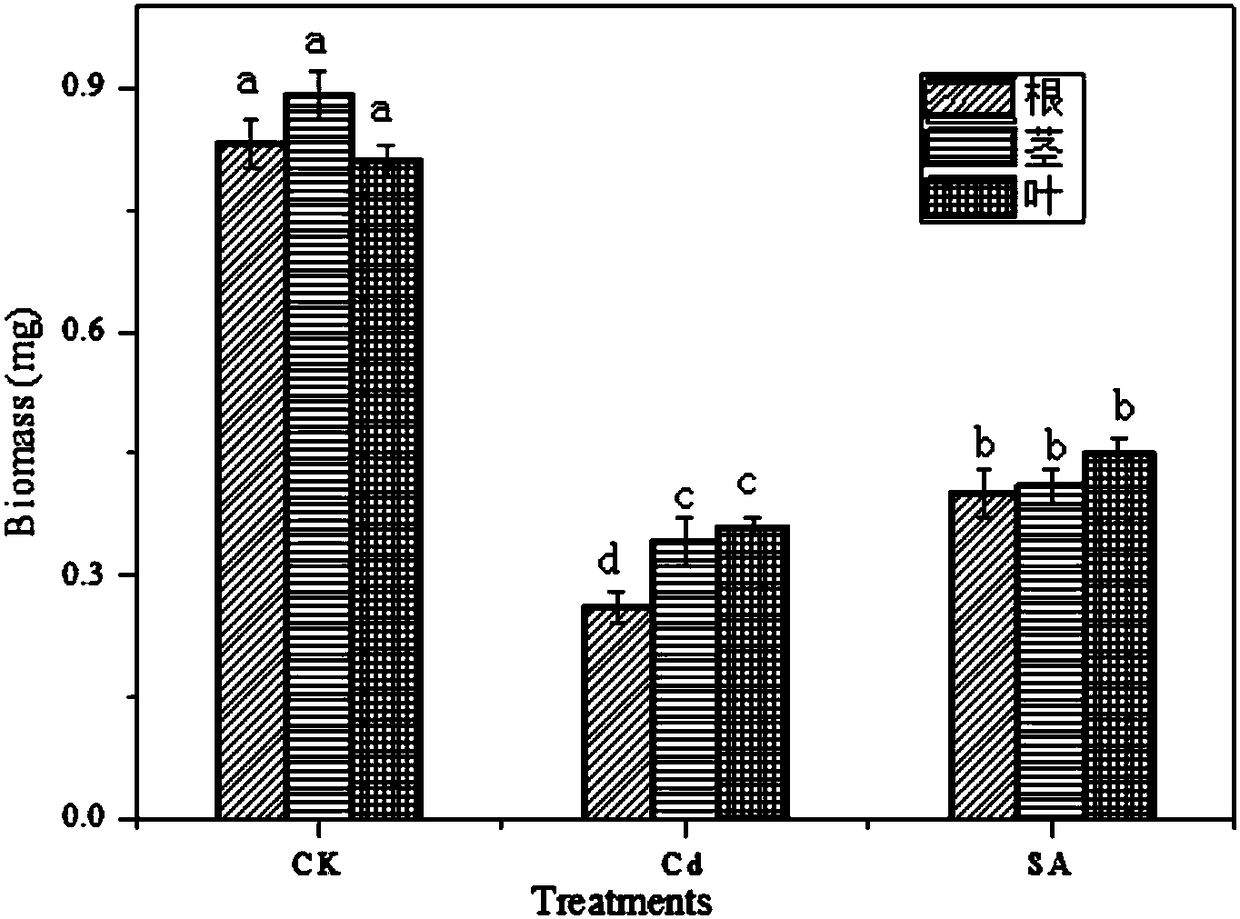Water culture method for relieving toxic effect of cadmium on tomatoes through salicylic acid and application of salicylic acid
A technology of salicylic acid and tomato, applied in application, horticultural methods, botanical equipment and methods, etc., can solve the problems of reducing cadmium content and no research, so as to increase biomass, alleviate the inhibition of photosynthetic rate, and relieve cell membrane the effect of damage
- Summary
- Abstract
- Description
- Claims
- Application Information
AI Technical Summary
Problems solved by technology
Method used
Image
Examples
Embodiment 1
[0040] Choose tomato seeds with consistent size and plump grains (purchased from the Chinese Academy of Agricultural Sciences, the varieties are Liger (cadmium-tolerant) and Tabd (cadmium-sensitive)), and use 30% H 2 o 2 The solution was sterilized for 15 minutes, then rinsed with distilled water for 5 times, placed evenly in a tray with vermiculite, kept sufficient water, and germinated in an artificial incubator at 20°C. At the stage of two leaves and one heart, the tomato seedlings were transferred to hydroponic pots containing 1 / 2 Hoagland nutrient solution, and placed in an automatic control growth room for cultivation (light 15-17h, dark 7-9h, relative humidity 55%-65%) , the temperature is 24°C-28°C (day) / 18°C-22°C (night)). After three weeks of hydroponic cultivation, plants with uniform growth were selected and transplanted into hydroponic pots (capacity 1000 ml, 15×17 cm) for experimentation. With a concentration of 100 μmol L -1 The salicylic acid aqueous solutio...
Embodiment 2
[0088] Choose tomato seeds with consistent size and plump grains (purchased from the Chinese Academy of Agricultural Sciences, the varieties are Liger (cadmium-tolerant) and Tabd (cadmium-sensitive)), and use 30% H 2 o 2The solution was sterilized for 15 minutes, then rinsed with distilled water for 5 times, placed evenly in a tray with vermiculite, kept sufficient water, and germinated in an artificial incubator at 20°C. At the stage of two leaves and one heart, the tomato seedlings were transferred to hydroponic pots containing 1 / 2 Hoagland nutrient solution, and placed in an automatic control growth room for cultivation (light 15-17h, dark 7-9h, relative humidity 55%-65%) , the temperature is 24°C-28°C (day) / 18°C-22°C (night)). After three weeks of hydroponic cultivation, plants with uniform growth were selected and transplanted into hydroponic pots (capacity 1000 ml, 15×17 cm) for experimentation. With a concentration of 150μmol L -1 The salicylic acid aqueous solution ...
Embodiment 3
[0092] Choose tomato seeds with consistent size and plump grains (purchased from the Chinese Academy of Agricultural Sciences, the varieties are Liger (cadmium-tolerant) and Tabd (cadmium-sensitive)), and use 30% H 2 o 2 The solution was sterilized for 15 minutes, then rinsed with distilled water for 5 times, placed evenly in a tray with vermiculite, kept sufficient water, and germinated in an artificial incubator at 20°C. At the stage of two leaves and one heart, the tomato seedlings were transferred to hydroponic pots containing 1 / 2 Hoagland nutrient solution, and placed in an automatic control growth room for cultivation (light 15-17h, dark 7-9h, relative humidity 55%-65%) , the temperature is 24°C-28°C (day) / 18°C-22°C (night)). After three weeks of hydroponic cultivation, plants with uniform growth were selected and transplanted into hydroponic pots (capacity 1000 ml, 15×17 cm) for experimentation. Use a concentration of 50 μmol L -1 The salicylic acid aqueous solution ...
PUM
 Login to View More
Login to View More Abstract
Description
Claims
Application Information
 Login to View More
Login to View More - R&D
- Intellectual Property
- Life Sciences
- Materials
- Tech Scout
- Unparalleled Data Quality
- Higher Quality Content
- 60% Fewer Hallucinations
Browse by: Latest US Patents, China's latest patents, Technical Efficacy Thesaurus, Application Domain, Technology Topic, Popular Technical Reports.
© 2025 PatSnap. All rights reserved.Legal|Privacy policy|Modern Slavery Act Transparency Statement|Sitemap|About US| Contact US: help@patsnap.com



